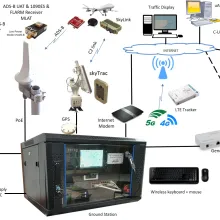Like you, it’s been great to see that the development of new technologies have had a positive impact on safety of GA, they can have the drawback to focus our attention on screens and forget that our primary attention should watching outside the cockpit. Whatever GA aircraft type you fly, let’s remember to follow the 80/20 rule – look outside for 80% of the time so that you can have a fun and safe flight.
Now updated with latest video collaboration with Aviaze.


I totally agree. ADS-B and Mode S together represent a way, way more significant safety benefit than using 8.33 kHz channel spacing.
EASA, please support ADS-B through 1090 MHz or even through UAT where we could receive inexpensive inflight weather !